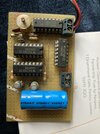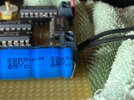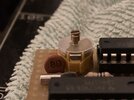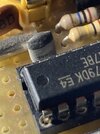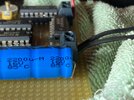wombweller
Member
Hello all.
Please see the attached photo of a circuit I’d like to copy. I don’t have the actual board a friend of mine sent me the photo.
It’s a circuit to produce 1 second alternating pulse using the following IC’s-
CD4017B x2, CD4060B x1 and a CD4024B.
Can anyone point me to a circuit diagram for this, maybe there is something online, if there is I’m unable to find it.
I think this circuit is used so it can run on 3v so low power. It’s for pulsing a low voltage Brillie slave clock and needs to be a small footprint so it can go in to the back of the clock and run on batteries.
I look forward to hearing from you.
Regards
Mark
Please see the attached photo of a circuit I’d like to copy. I don’t have the actual board a friend of mine sent me the photo.
It’s a circuit to produce 1 second alternating pulse using the following IC’s-
CD4017B x2, CD4060B x1 and a CD4024B.
Can anyone point me to a circuit diagram for this, maybe there is something online, if there is I’m unable to find it.
I think this circuit is used so it can run on 3v so low power. It’s for pulsing a low voltage Brillie slave clock and needs to be a small footprint so it can go in to the back of the clock and run on batteries.
I look forward to hearing from you.
Regards
Mark
